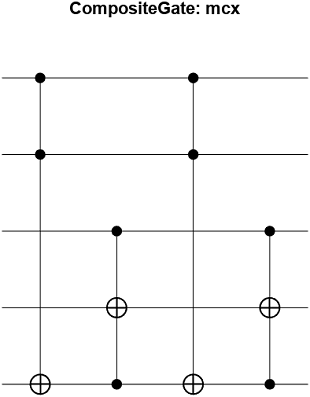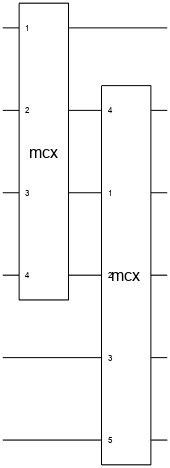mcxGate
Installation Required: This functionality requires MATLAB Support Package for Quantum Computing.
Description
cg = mcxGate(controlQubits,targetQubit,ancillaQubits)xGate or
the equivalent classical NOT gate) to the target qubit. Otherwise, the gate has no effect on
the target qubit.
The qubit indices in controlQubits, targetQubit,
and ancillaQubits must not be the same.
Examples
Input Arguments
Output Arguments
References
[1] Barenco, Adriano, et al. “Elementary Gates for Quantum Computation.” Physical Review A 52, no. 5 (November 1, 1995): 3457–67. https://doi.org/10.1103/PhysRevA.52.3457.
Version History
Introduced in R2023a


